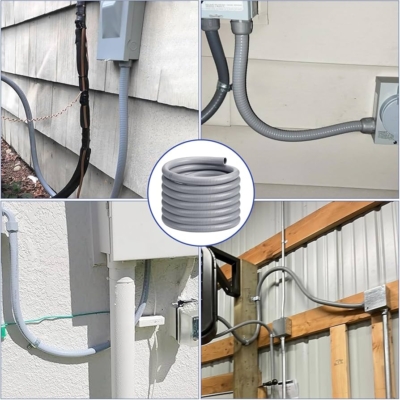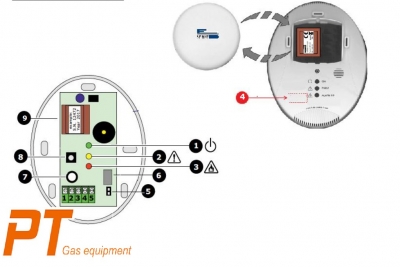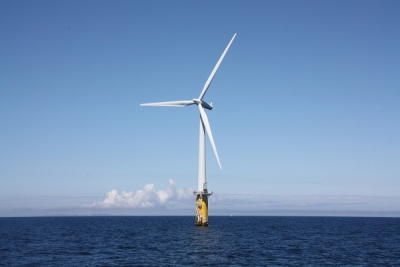



Propane has continued to gain popularity as a fuel source due to abundant supplies, low-cost and an environmentally friendly profile compared to other fuels. These benefits in addition to its ease of use have made propane a desirable fuel for home heating, agricultural applications and baseload & backup fuel for industrial thermal processes and electrical power generation, particularly in remote locations lacking access to natural gas pipelines.
Implementing propane fuel for any of these applications requires a specialized understanding LPG system design that takes into consideration the nature of vaporization itself which is inherent to LPG fuel usage along with its myriad of related variables including LPG boil-off rate, ambient storage temperature, the size and fill level of the LPG storage vessel(s) being used, storage tank pressure, the fuel consumption rate of supported equipment, potential safety issues, failure rates (and necessary redundancy), and more.
Natural Vaporization
At standard pressure and temperature, propane exists as a gaseous fuel. However, for its efficient storage and handling, propane is liquefied under modest pressure to produce LPG (liquefied petroleum gas), a form that is 250 times reduced from its natural state. In this form, LPG can be easily—and economically— transported and stored as a liquid under pressure in storage tanks and cylinders.
In order for your equipment (boiler, process burner, heater) to consume LPG, the liquid must first be returned to its gaseous state, through a process referred to as vaporization, or ‘boil off’ (when LPG boils off/transforms to vapor.)
The good news is, with a boiling point of −42 °C (−44 °F), propane is naturally vaporized at ambient temperatures. In other words, simply releasing propane from its pressurized storage container is often enough to allow natural vaporization to occur and produce a flow of propane vapor typically sufficient for residential and light commercial applications.
So Why Use a Vaporizer?
For the continuous, steady operation of your application, the amount of gas your equipment draws from your storage tank must be matched by the rate of vaporization. However, because natural vaporization is a function of both ambient temperature and storage tank size (as well as tank fill level), natural vaporization performance has its limits.
A higher ambient temperature (i.e. anything above −42 °C) will result in a faster rate of vaporization along with a higher vapor pressure. Likewise, a larger, fuller storage tank (with greater “wetted” surface area) will offer correspondingly greater vaporizing capacity.
On the other hand, in the case of lower ambient temperatures or a smaller or less full storage vessel, vapor pressure and capacity may be lacking. For example, when the temperature of the propane liquid falls below its boiling point, vaporization may slow down—or even stop completely. Moreover, as propane is released from the storage vessel, pressure inside the vessel will fall accordingly. As tank pressure drops, remaining liquid within the container cools.
If the temperature of liquid inside the vessel falls below the dew point of ambient air, frost will begin to appear on the lower part of the storage vessel and extend up towards the liquid level. If your propane storage tank routinely ices up, it’s a good indicator your tank is simply not large enough for the vaporization load being placed on it.
Each piece of propane consuming equipment has its own requirements as to the amount of vapor it needs to run properly. For heavier commercial and industrial applications for example, which generally call for larger, more demanding LPG consuming equipment, natural vaporization is often insufficient. It simply cannot provide the amount of vapor demanded by these more robust applications.
If your equipment is not getting the vapor pressure it needs, it may deliver less heat than your application requires, or—even more damaging—shut down your operation entirely.
In some cases, simply switching to a larger storage vessel may provide the additional vaporizing capacity your equipment needs. But for more demanding applications, or in cases where a larger vessel is simply not an option, adding a vaporizer to ‘artificially’ increase vaporization is a reliable solution.
Vaporizers are designed to receive large volumes of LPG liquid and transform it to vaporized gas, at a steady rate and pressure—from hundreds of gallons per hour to thousands of gallons per hour. The amount of heat that is transferred into the LPG gas controls the rate of vaporization and the right vaporizer delivers a constant supply of vaporized gas as needed.
Vaporizer Selection
Vaporizers are used to perform two distinct functions:
1. To produce propane vapor at a higher rate than a propane storage tank.
2. To produce Synthetic Natural Gas (SNG) as a direct replacement for Natural Gas (NG).
Below, we’ll help you understand the types of vaporizers